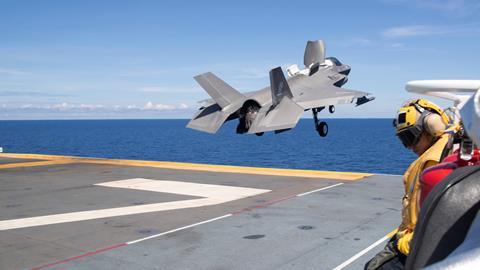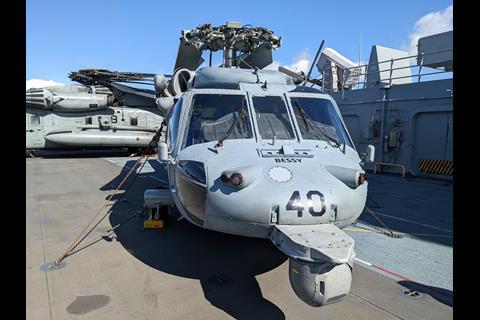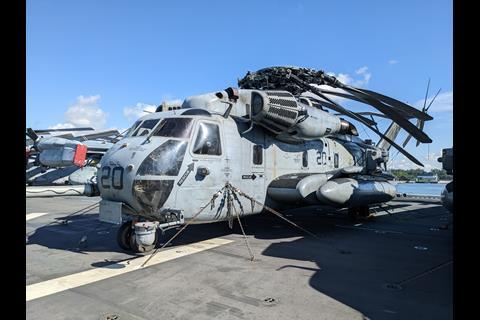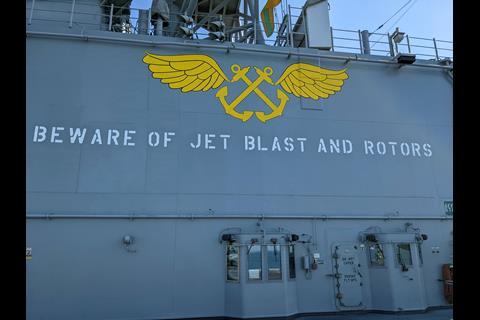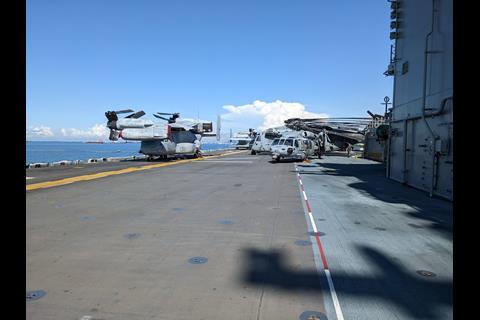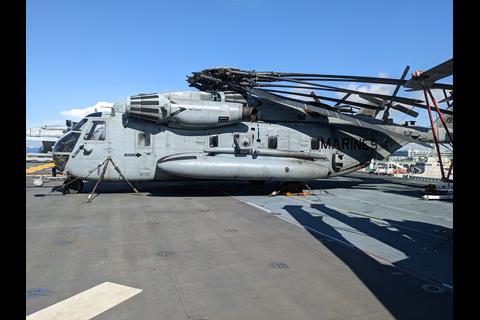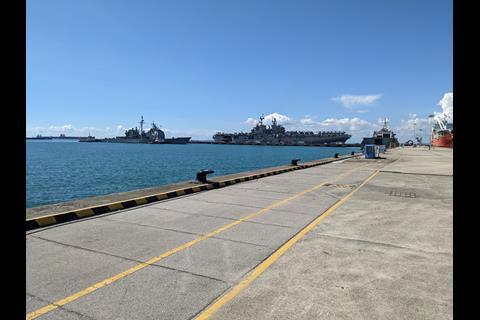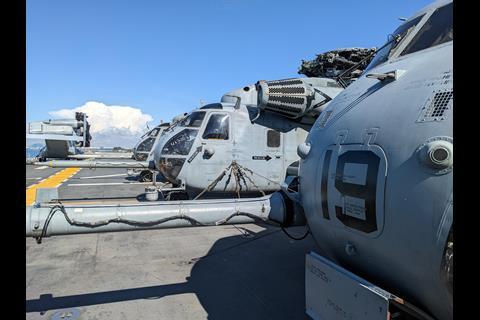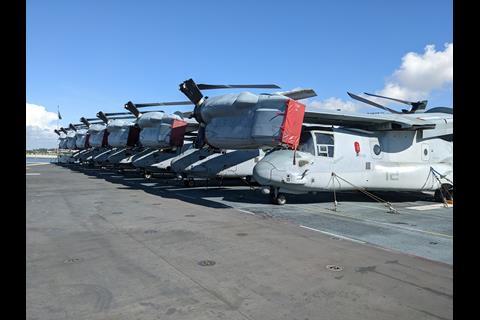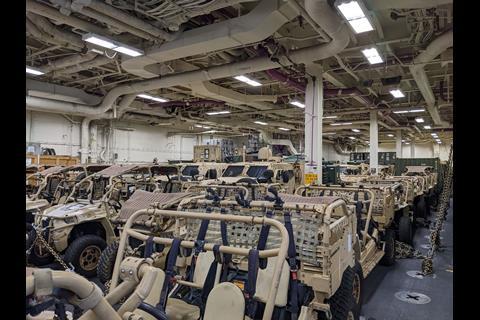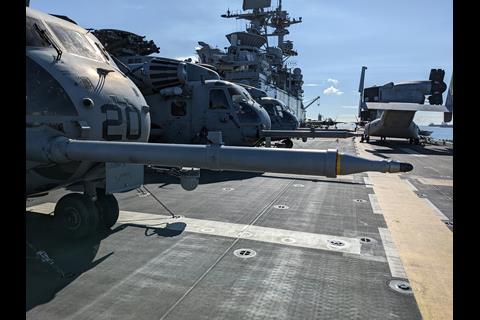US Marine Corps (USMC) pilots of the Lockheed Martin F-35B are impressed with the type’s sensor capabilities, as the force explores new concepts for operating them from amphibious assault ships.
USMC Captain Matteo Occhipinti notes that the short take-off and vertical landing (STOVL) F-35B is a great advancement over legacy Marine aircraft such as the Boeing AV-8B Harrier II.
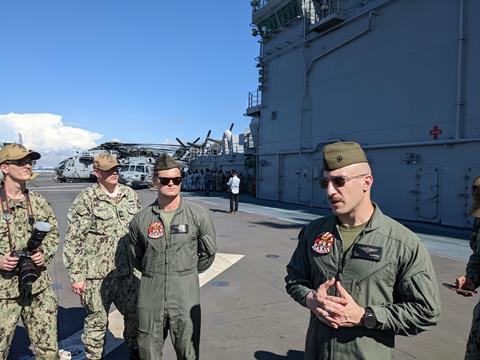
“We use the F-35 out here when we’re looking for all kinds of things, [such as] vehicles and ships,” he says. “It’s just completely different.”
He also notes the ability of the aircraft to share information, through both the Link 16 datalink and Multifunction Advanced Data Link.
“The big leap in technology is the sensors, and then the data links and the fusion between the two. It’s an amazing capability.”
Occhipinti made the remarks aboard the USS Tripoli during a stop in Singapore. He is a pilot with VMFA-121, which has six F-35Bs deployed aboard the ship. Other USMC assets aboard Tripoli include 10 Bell Boeing MV-22B Osprey tiltrotors and four Sikorsky CH-53E Sea Stallions.
Also embarked are three US Navy (USN) Sikorsky MH-60S Seahawks, which serve the utility and search and rescue missions.
Tripoli, the second ship of the America class, is optimised for aviation work and lacks the welldeck found on many amphibious assault ships. The vessel carries twice as much aviation fuel and 30% more aviation ordnance than the previous Wasp class of amphibious assault ships.
Still, wheeled USMC vehicles are carried on a lower deck. For loading onto rotorcraft, they must traverse a long ramp up to the hangar deck, followed by an elevator ride to the flight deck.
Earlier this year, Tripoli was involved in work around the ‘Lightning Carrier’ concept. This saw the ship dispense with most rotorcraft assets and marine personnel, and instead carry a beefed-up fighter wing of 16 or more F-35Bs.
“The Lightning Carrier is focused on fixed-wing aviation… kinetic effects and projecting power via the number of aircraft – specifically the F-35,” says Occhipinti. “The Marines are exploring the concept.”
One challenge is figuring out how the “deck cycle” works with so many fighters embarked. Occhipinti notes that USN super carriers have four catapults, allowing four jets to launch simultaneously. Tripoli, by contrast, has just one runway for STOVL take offs.
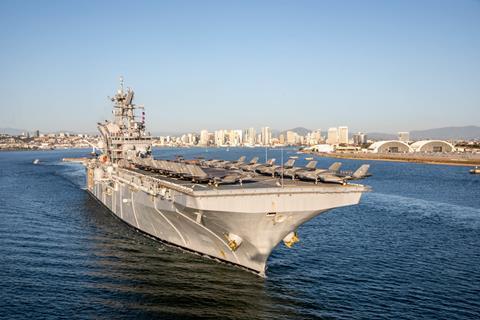
Exposure to the F-35B is particularly relevant for Singapore, which has officially ordered four examples for delivery in 2026, but has US approval to buy up to 12.
A 31 August story in Pioneer, the official publication of Singapore’s armed forces, reports that Republic of Singapore Air Force (RSAF) personnel participating in Australia’s Pitch Black exercise are impressed with F-35s operated by US forces.
The story notes that two F-35s were able to dispatch a larger team of adversaries, which included a pair of RSAF Boeing F-15SGs. Pitch Black has also afforded the RSAF an understanding of maintaining the type, as well as how it interacts with the its Airbus Defence & Space A330 multi-role tanker transports.





















